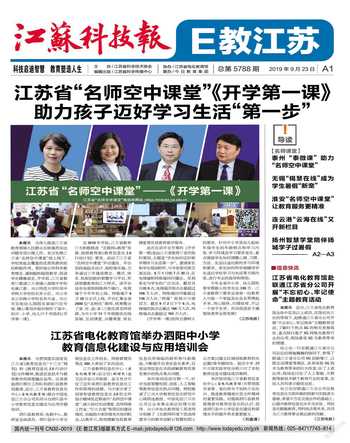【译题】基础教育创新驱动力报告
Top 5 HURDLES
1.Scaling and sustaining innovation
Many school systems lack the agility, strategies and mindsets to move innovative technology practices from a few classrooms to multiple settings across schools and school systems. Institutionalizing innovation requires a systemic, iterative approach, including ways to identify effective practices to scale and sustain.
2.Digital equity
Equitable access to broadband connectivity, digital tools and content, and innovative instructional strategies is a growing concern. Socioeconomic status, geography, race, gender or disability limit access to opportunities to learn in a digital world.
3.The gap between technology and pedagogy
Rapid advances in technology are putting pressure on educators to refresh or shift their approaches to teaching and learning. When digital tools are introduced without a continual, dialectical relationship between research and pedagogy, or without timely professional development for teachers, technology implementations can result in wasted time, effort and investments—and lost opportunities to learn for students.
4.Ongoing professional development
Engaging all teachers in meaningful professional development on innovative teaching practices is key to successful technology integration. Top-down, one-size-fits-all, sit-and-get training shows little to no impact on student achievement. Instead, personalized, job-embedded professional development can support teachers in their journeys as lifelong learners and practitioners who continue developing their professional skills.
5.Technology and the future of work
Artificial intelligence, robotics and “deep learning” are among the game-changing technologies that are altering how people think, learn, live and work. Now is the time for educators to seriously consider how technologies on the horizon will impact teaching, learning and the world that awaits students in coming years. Digital fluency is rapidly emerging as critical for workforce preparedness. Digital citizenship is important as well, as students must understand how to live ethically and responsibly in the digital world.
Surveying the HURDLES
For this first report, 2019 Hurdles, an international Advisory Board of 111 renowned educational technology experts collaborated virtually to identify broad issues, rank them in order of difficulty to overcome, and explore the scope,implications,opportunities and solutions for overcoming each hurdle. This group included leading members of CoSN’s Emerging Technologies Committee, as well as leaders from key U.S. and international education organizations and ministries of education.
CoSN cast a wide net to identify hurdles—major obstacles standing in the way of innovation, access,equity and other priorities in K–12 education. The international Advisory Board began its work with a short list of potential hurdles and then added to the list. In all, the experts considered 27 distinct hurdles to innovation. In an online forum, the Advisory Board then engaged in a series of discussion and survey prompts, each of which correspond to actions that must be taken to understand and overcome the hurdles:
Define. How would you define each hurdle?
Scope. How surmountable is each hurdle? Rank each one on a scale of 1 to 5, with 1 the easiest hurdle and 5 the most difficult.
Imagine. What are the implications if this hurdle is not addressed?
Reflect. How is this hurdle materializing at your school, district or municipality?
Solve. How can this hurdle be surmounted?
Iterate. What hurdles are missing from the list?
Percentage of Advisory Board members who believe these hurdles are the most important to address in 2019, regardless of difficulty, to pave the way for teaching and learning innovation and extraordinary student outcomes.
譯文
五大挑战
1.保持与扩大创新
许多学校缺乏将创新技术实践从小部分课堂迁移到跨学校跨系统等多系统设置的灵活性、策略以及思维模式。制度化创新需要一种系统的、迭代的方法,包括确定能保持和扩大有效实践的方法。
2.数字公平
公平获享宽带连接、数字工具和内容以及创新教学策略等问题正在日益受到关注。而社会经济地位、地理环境、种族、性别或残疾限制了人们获享数字化学习的机会。
3.教育理论与技术实践的差距
技术的快速发展给教育工作者带来了压力,促使他们更新或改变教学方法。当数字工具被引入教学时,倘若研究与教育理论之间缺乏持续的辩证关系,或者教师缺乏同步的专业发展,那么技术实施可能导致浪费时间、精力和投资,并且失去了认识学生的机会。
4.持续的专业发展
让所有教师参与有意义的专业发展,从而创新教育实践,是成功实现技术整合的关键。自上而下、一刀切、被动式训练对学生成绩的影响微乎其微。相反,个性化的、职业嵌入式的专业发展促使教师成为终身学习者和实践者,在职业生涯中继续发展其专业技能。
5.技术与未来的工作
人工智能、机器人技术和“深度学习”是改变人们思考、学习、生活和工作方式的颠覆性技术。现在正是教育工作者认真考虑未来几年技术将如何影响基础教育教与学和未来学生面临的世界的时候了。数字的流畅性正迅速成为劳动力准备的关键。数字公民身份也很重要,因为学生必须了解如何在数字世界中以道德和负责任的方式生活。
关于挑战的调查
在第一份报告《2019挑战》中,由111位著名教育技术专家组成的国际咨询委员会进行了实质性的合作,以确定广泛的问题,根据克服问题所需的难度系数对其进行排序,并探讨克服每一个挑战的范围、影响、机会和解决方案。该小组包括CoSN新兴技术委员会的主要成员,美国和国际教育组织主要领导人,教育部部委。
CoSN建立了一个广泛的网络调研,以确定基础教育创新、途径、公平和其他优先事项所面临的主要挑战。国际咨询委员会先罗列了一个潜在挑战的简要表单,然后再逐步丰富表单。总之,专家们考虑了27个创新所面临的不同挑战。在一个在线论坛上,咨询委员会进行的一系列讨论和调查显示,以下每项问题相对应采取的行动,有利于理解和克服这些挑战:
界定。如何定义每一项挑战?
范围。每项挑战的克服难度如何?按1到5的难度系数排列,1表示最容易克服的挑战,5表示最难克服的挑战。
预想。假如挑战没有克服将会怎么样?
反思。你所在的学校、地区或城市是怎么处理这些挑战的?
解决。这个挑战的解决方法有哪些?
表单。表单中缺少哪些挑战?
百分比表示咨询委员会成员认为2019年所面临这些挑战的重要程度,无论遇到什么困难,它们都将为取得教学创新和显著的学习成果铺平道路。

